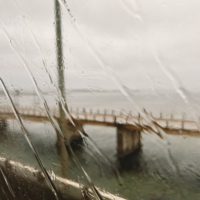ggroups: an R package for pedigree and genetic groups data https://link.springer.com/article/10.1186/s41065-020-00124-2
Author: Luis
Most documents go through several versions (always more than you expected) before they are finally finished. Accordingly, you should do whatever possible to make the job of changing them easy.
First, when you do the purely mechanical operations of typing, type so subsequent editing will be easy. Start each sentence on a new line. Make lines short, and break lines at natural places, such as after commas and semicolons, rather than randomly. Since most people change documents by rewriting phrases and adding, deleting and rearranging sentences, these precautions simplify any editing you have to do later. —Brian W. Kernighan (1974)
Genetic competition
Good explanation on fitting competition models in forest genetic trials using asreml:
Competitive Genetics: Exploring the impact of direct and indirect genetic effects in tree breeding. https://vsni.co.uk/blogs/competitive-genetics
Based on the work by Joao Costa e Silva and Richard Kerr “Accounting for competition in genetic analysis, with particular emphasis on forest genetic trials” https://link.springer.com/article/10.1007/s11295-012-0521-8
Physics of coffee
I’m often fascinated by the lengths people will go to get something they like, as in “Reaching Fuller Flavor Profiles with the AeroPress” https://coffeeadastra.com/2021/09/07/reaching-fuller-flavor-profiles-with-the-aeropress/
Getting rid of convergence information in asreml
I am coding simulations where I call asreml() and it was taking longer than necessary, because it was sending the convergence information to the screen. The trick to get rid of that is to use the trace = FALSE option as in
asreml(trait_1 ~ 1, random = ~ mum, data = current_trial, trace = FALSE)Getting rid of bars and outliers in boxplots
Sometimes I am testing graphs and I want to get rid of the lines (coef = 0) and outliers (outlier.shape = NA), particularly if I’m overlapping points.
geom_boxplot(coef = 0, outlier.shape = NA)A good entry point to Julia
Danielle Navarro wrote a three-post series introducing Julia almost from scratch. Fantastic work. Bookmarking.
- A foundation in Julia https://blog.djnavarro.net/posts/2024-03-01_julia-foundation/
- Working with data in Julia https://blog.djnavarro.net/posts/2024-03-02_julia-data-frames/
- Plotting data in Julia https://blog.djnavarro.net/posts/2024-03-03_julia-plots/
Basic course on population genetics
By Bruce Weir and Jerome Goudet. I added it to the Internet Archive as well. https://www2.unil.ch/popgen/teaching/SISG23/
Improving genomic selection
Would data augmentation improve the performance of within-family selection in forestry datasets?
Data Augmentation Enhances Plant-Genomic-Enabled Predictions https://www.mdpi.com/2073-4425/15/3/286
Processing LiDAR
Looking for alternatives to the lidR R package, for research purposes, plus some resources to start working on it.
New collection of Jupyter Notebooks enables programmatic access to cloud-hosted USGS 3D Elevation Program (3DEP) lidar data https://opentopography.org/blog/new-collection-jupyter-notebooks-enables-programmatic-access-cloud-hosted-usgs-3d-elevation
Big Data Geospatial Processing for Massive Aerial LiDAR Datasets https://www.mdpi.com/2072-4292/12/4/719 uses Spark
A guide covering LiDAR including the applications, libraries and tools that will make you better and more efficient with LiDAR development. https://github.com/mikeroyal/LiDAR-Guide
Learning from LiDAR Data with Deep Learning https://www.strong.io/blog/deep-learning-for-lidar-data
Forest inventory with high-density UAV-Lidar: Machine learning approaches for predicting individual tree attributes https://doi.org/10.1016/j.compag.2020.105815
